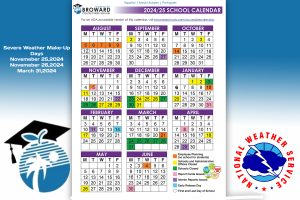Block and 1-6: The Best New Mix
August 26, 2022
You look at the clock and it reads 1:00 PM. An hour later, 1:01 PM—at least this is what it felt like when running on last year’s block schedule. Now, “every time I check the clock in one of my classes, there’s almost always less than 15 minutes left,” junior Milagros Ortega raises a great point: by the time we check those bright white numbers, a student to your right is putting the last pen into her pouch, and another to your left is jamming his AirPods into his ears. In seemingly no time, class is over.
That’s the beauty of the hybrid schedule—it seems quicker, so you’re almost always moving. Hybrid scheduling has you up on your feet nearly three times as much as full-block scheduling, something Lucas Ortega takes advantage of. “I enjoy being able to see my friends in between each period, and since there’s more class periods, there’s more chances for me to see them,” the sophomore explains. Whether you use that time to dart out of U-building’s jam-packed hallways or, like Lucas, take the more scenic route of handshakes, fist-bumps, and “what’s ups,” you’re not glued to your seat for nearly two hours at a time. “It’s worth carrying six subjects in my bag.”
On the subject of subjects, we can’t all say we are fond of every class. You might find your second period exhausting or your sixth tedious and monotonous, or you might not have many friends in third period—I get it; staying in these types of classes for 105 minutes sounds like punishment. To junior Bryan Kandic, it’s torture. “Being in a class for that long makes me really tired, especially in the morning,” he says. “Last year, every class was 105 minutes and it made the day feel so slow. I would lose focus a lot.” Brianna Correa, senior and charter veteran, has had the chance to experience both sides of the block, new and old.“I can lose focus being in a class for so long,” she expresses. “So, personally, I love the new schedule. We get to move around more, the days go by much faster, and I see my friends on a daily basis. The only downside is getting more homework, but there’s definitely more pros than cons. As a senior now, and seeing how much the schedule changes over time, I will always favor 1-6 days!” she says.
I admit getting more homework is a drawback of hybrid scheduling, but teachers can only assign as much as you can learn. And in 50 minutes, the time to teach is limited. Therefore, lessons are kept to one or two a day, compared to last year’s three, four, or even more. By having 55 fewer minutes per class this year, you’ll be entering the next period lively and animated, not mentally drained and exhausted–and I’m sure teachers do not want to deal with that mini epidemic for another year.
By far, however, the best attribute of hybrid scheduling is in its name: hybrid. Even if you prefer 1-6 with two block days, or purely block, you have both in the same week. “I actually feel that the [current schedule] is better,” sophomore Milanna Correa says. “It offers different days, some that are quicker and some [during which] you have more time to do your work in class.” And we all like options. Sure, your bag might be heavier for one or two days and you might receive a tad more homework than you desire, but at least you can say you have the best of both worlds.









Dylan Escandell • Sep 14, 2022 at 6:51 PM
I dont agree with daniel i cant keep up with my homework for 6 classes every day i keep managing to get mental breakdowns throughout the week i cant keep up 🙁